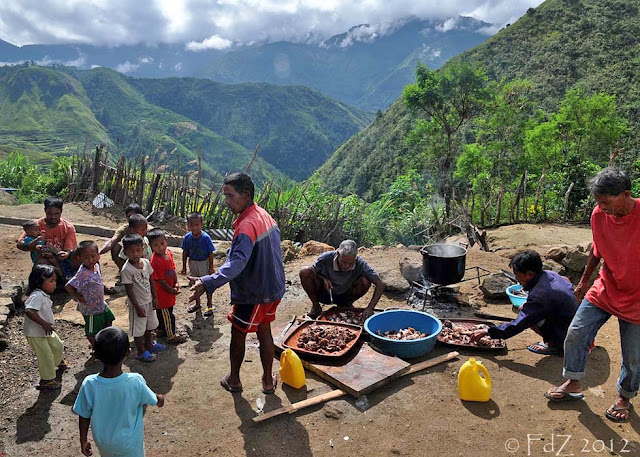The mountain village of Buscalan in the province of Kalinga held moving and meaningful surprises for my honey and me.
A good friend had invited us to join a group of photographers on their trip and we had enthusiastically agreed without really knowing much about their mission. So it was to be an adventure without expectations; the best kind, in my book. And we were not disappointed.
Yesterday, in Part I of this series, I showed the majestic rice terraces we passed on our journey through the mountains.
Only when we reached Buscalan, historically a headhunters' village, did we learn we were to meet the last Kalinga mambabatok or tribal tattoo artist.
Let me introduce you to the poised and talented Whang Od (pronounced Fang-ud). She is in her 90s, was never married (lost the love of her life in a fatal accident when still in her 20s), and still works daily both in the rice fields and at her special art of hand-tap tattooing.
Whang Od herself is adorned with traditional tribal tattoo designs, as well as beautiful heirloom beads. (You can read more about Kalinga beads here.) I suspect some of these beads she would have received in barter for her craft.
Lars Krutak, the tattoo anthropologist of Discovery Channel's Tattoo Hunter series fame, describes her craft thus:
Whang Od keeps her tattooing tools under the floor boards of her stilted hut. Her hand-tapping kit is comprised of a coconut bowl to mix a pigment of soot and water, an orange thorn needle (siit) attached to the end of a small bamboo stick, and another short stick used to tap the thorn into the skin.
I've read that for many, once they get one tattoo, they can't stop themselves getting more. Vixienne came back to Buscalan for her second tattoo. She is grimacing from the pain here, but not long after she was all smiles.
Jeremiah is the proud new owner of a traditional centipede tattoo by the national artist with a steady hand. (See Part VI so see his video of this.)
Buscalan, Kalinga, 2012
In this last photo you see Whang Od standing in front of her humble home and also the tomb she has built for herself - the entrance is behind her legs.
Many are concerned that when she dies, her art form will die with her. We were told - and I later read - that she has been training her young yet enthusiastic grand-niece, but we did not see her.
This is a short - less than two minute - video of the perilous road to Buscalan and Whang Od at her tap-tap-tap work. It was not made by anyone in our group.
My post today is linked to the blogging communities at Mosaic Monday and Macro Monday.
Drop in for Part III of this Kalinga series. Maybe I can surprise you, too!

















































.jpg)




